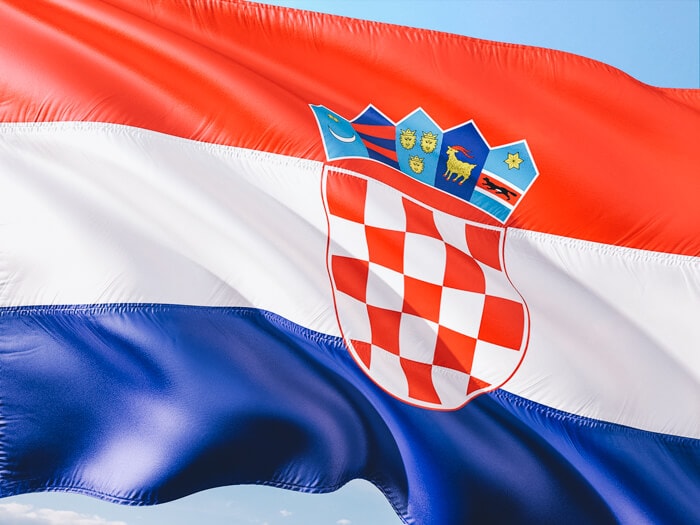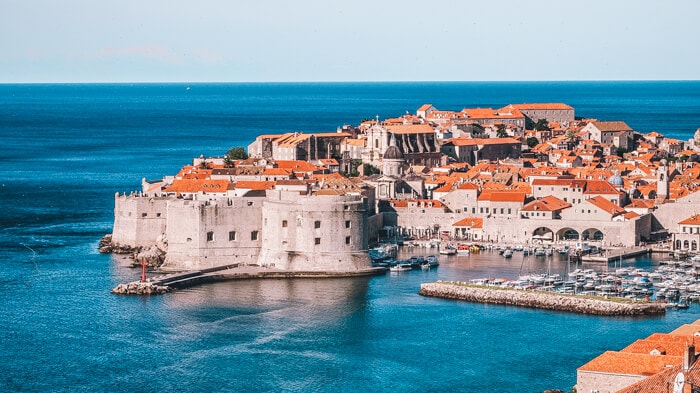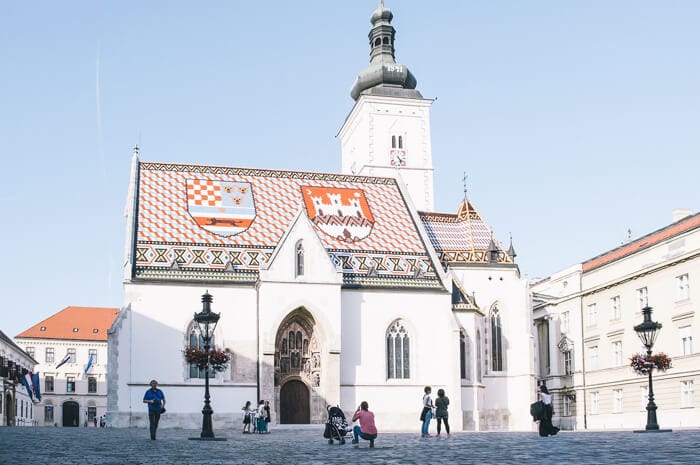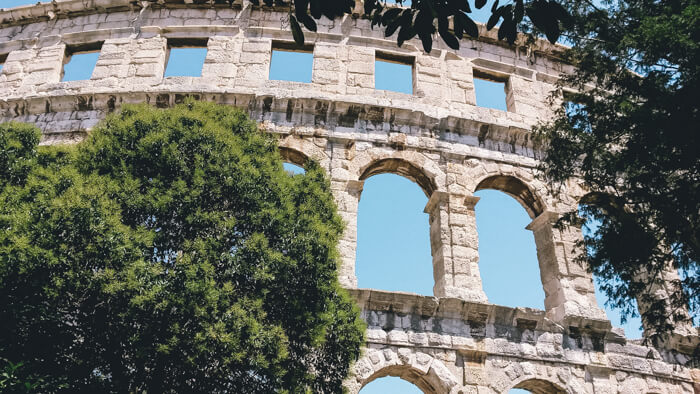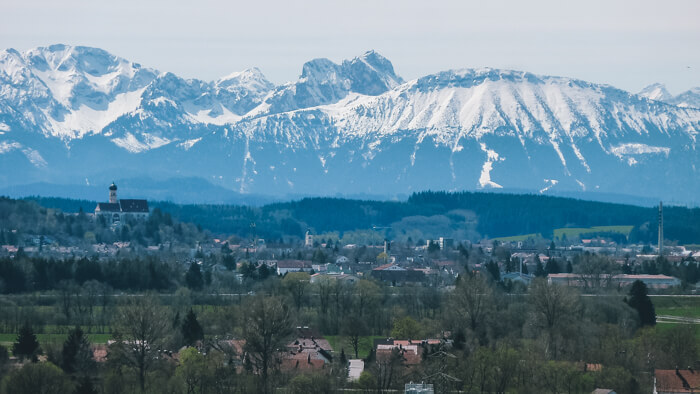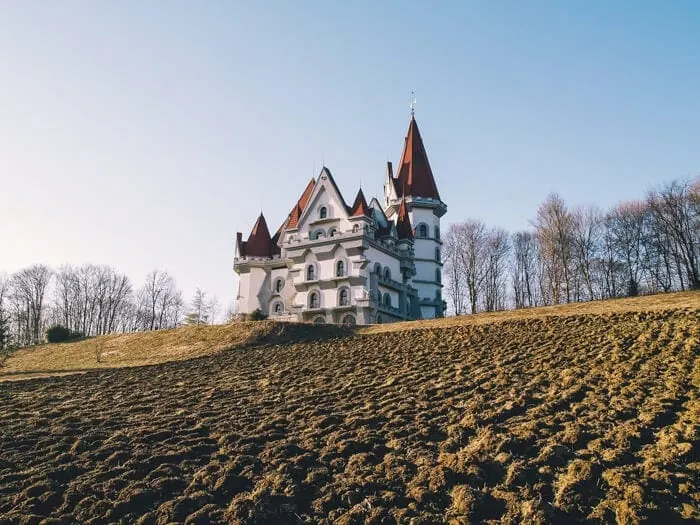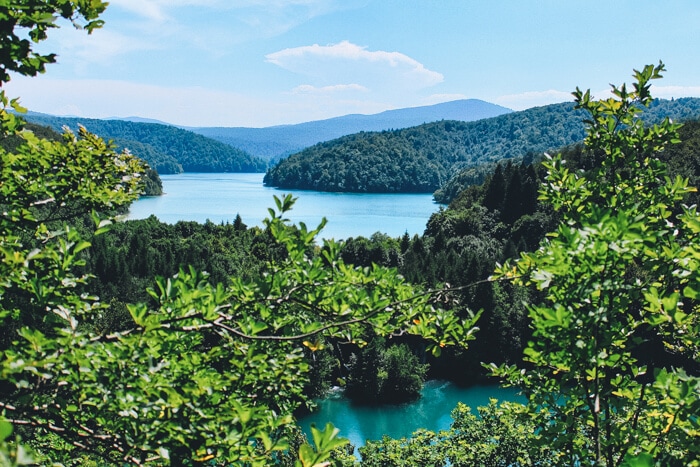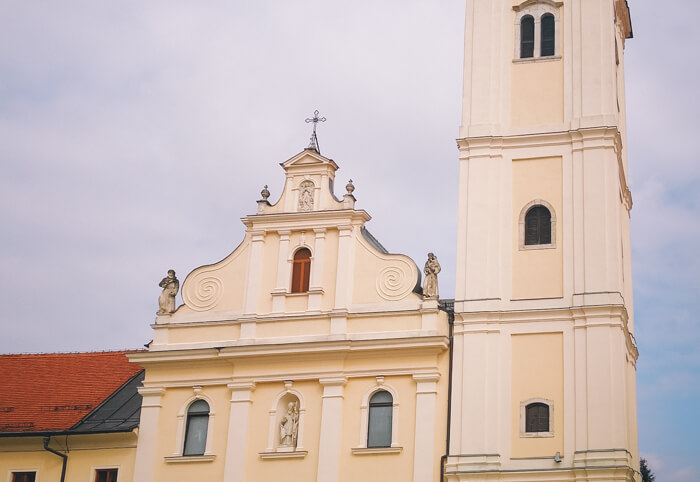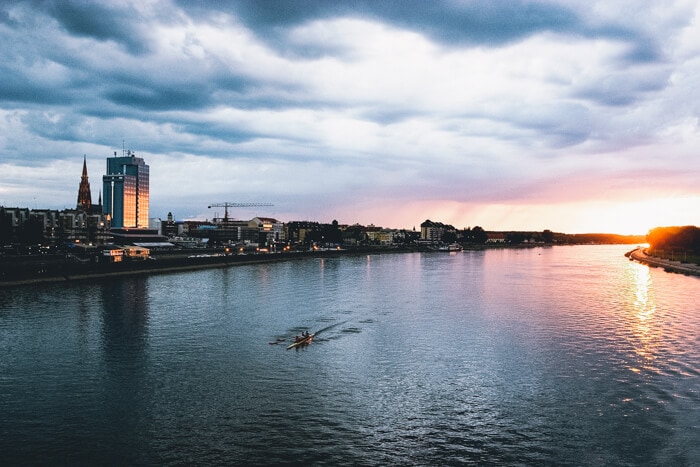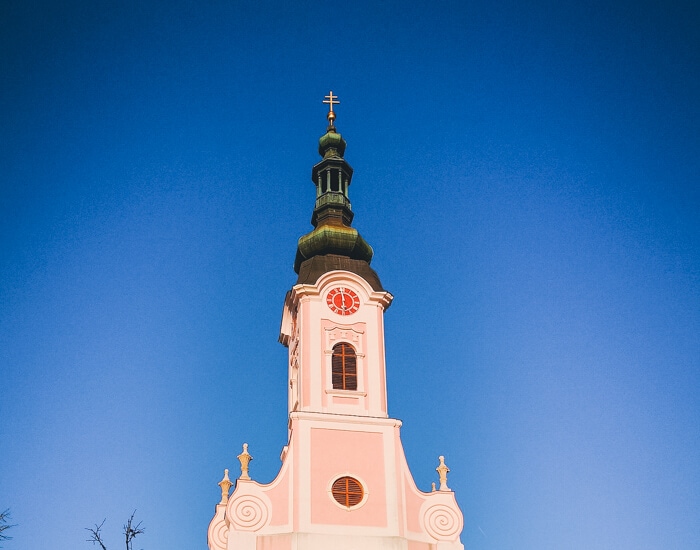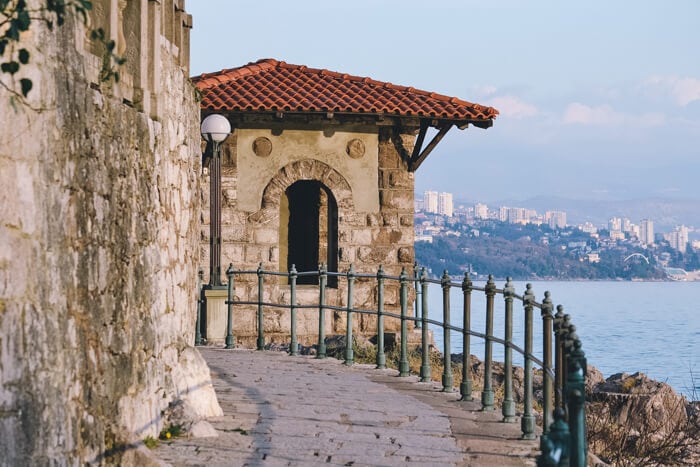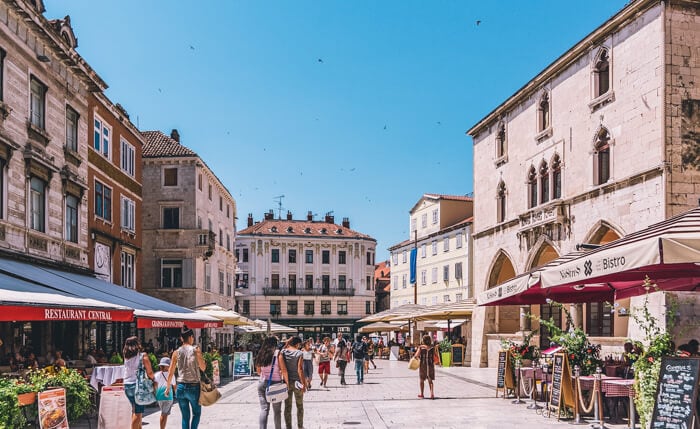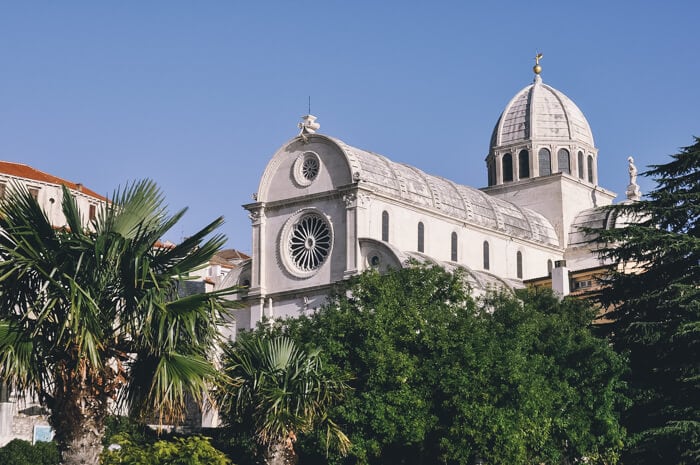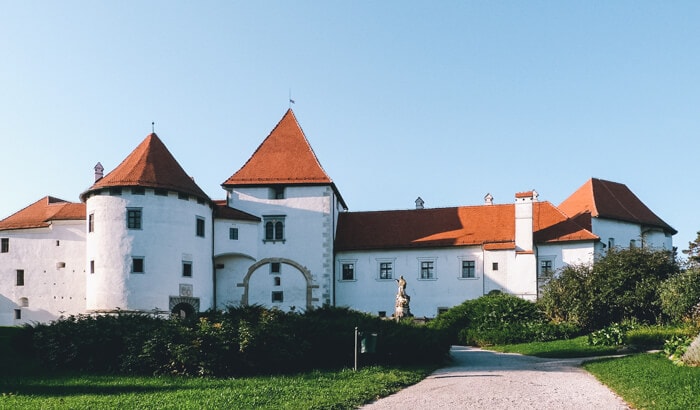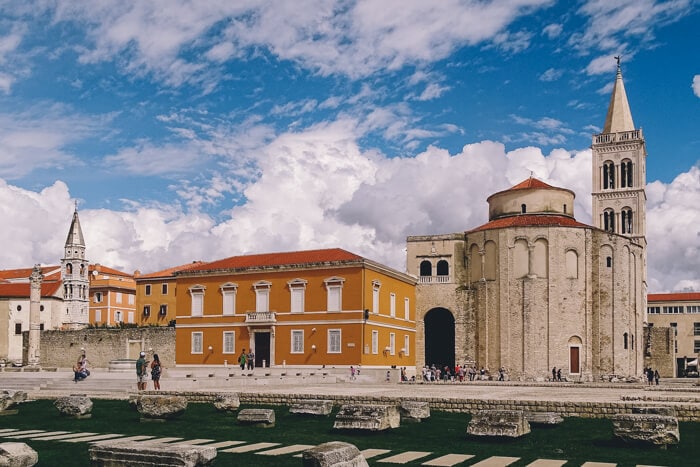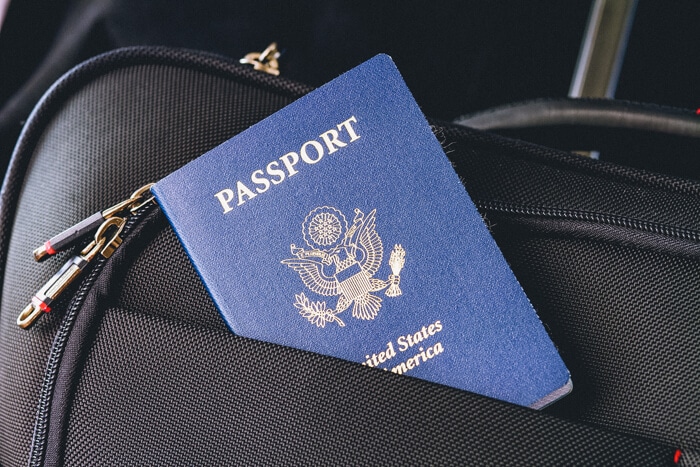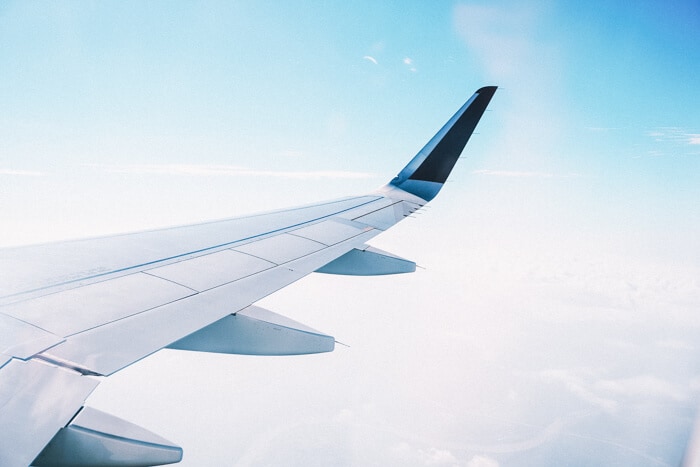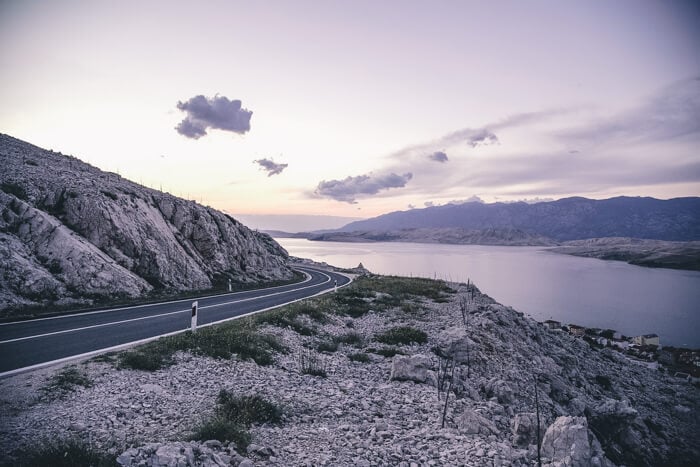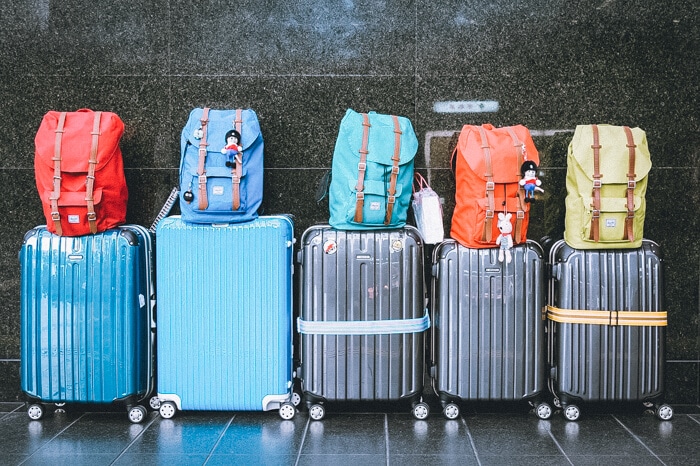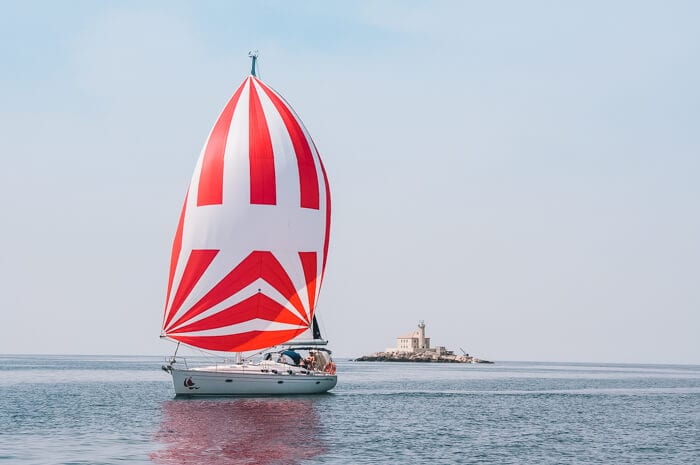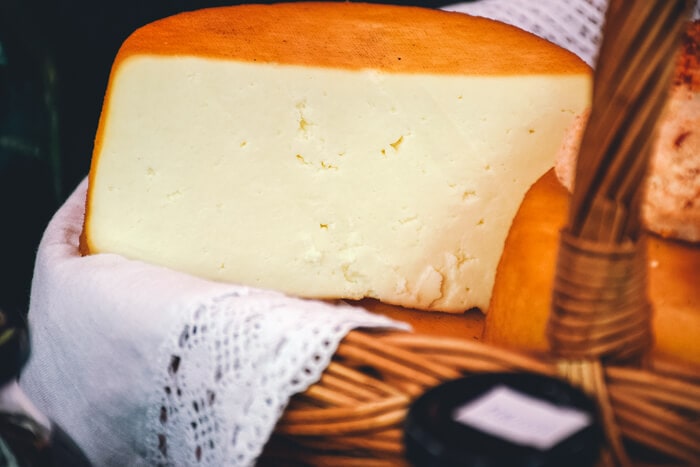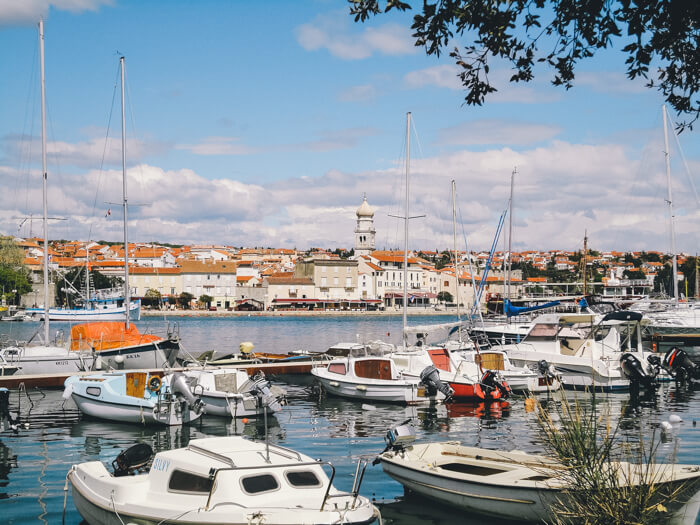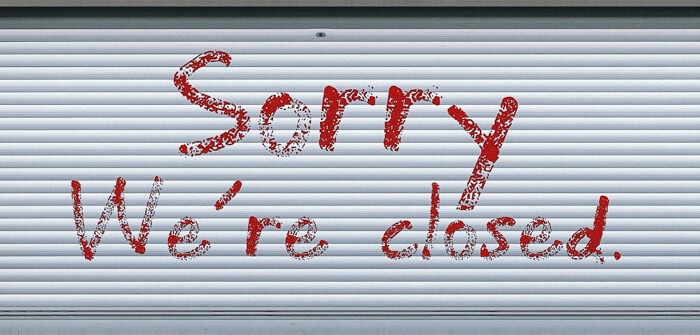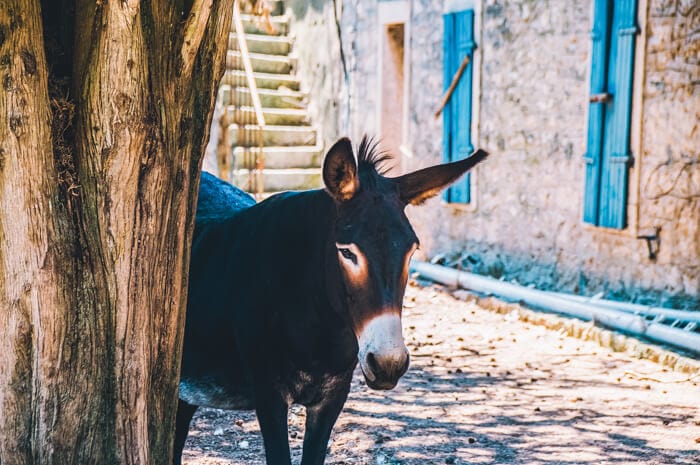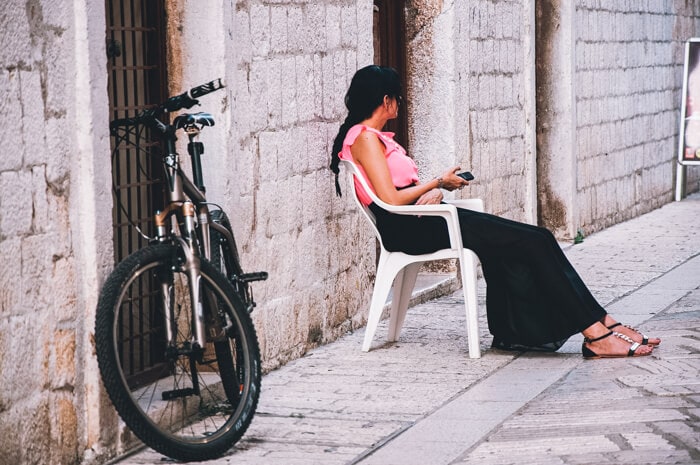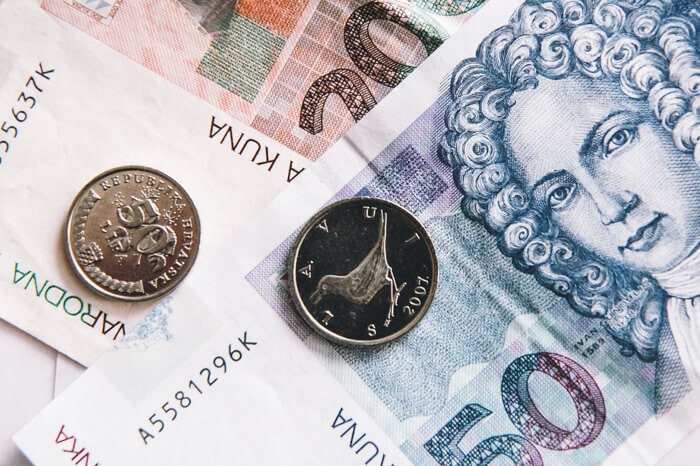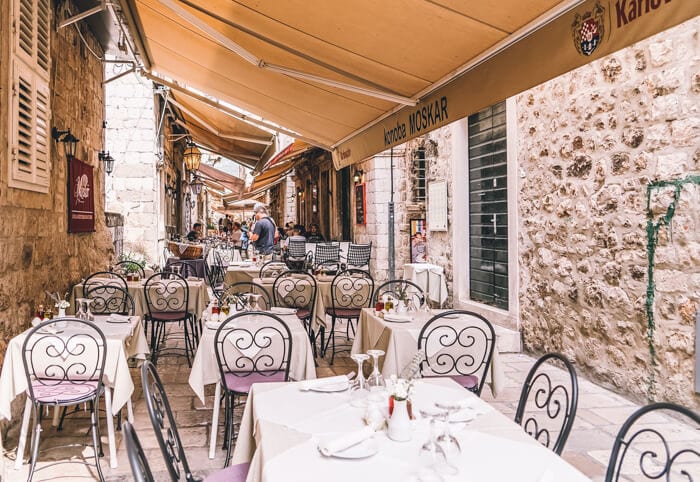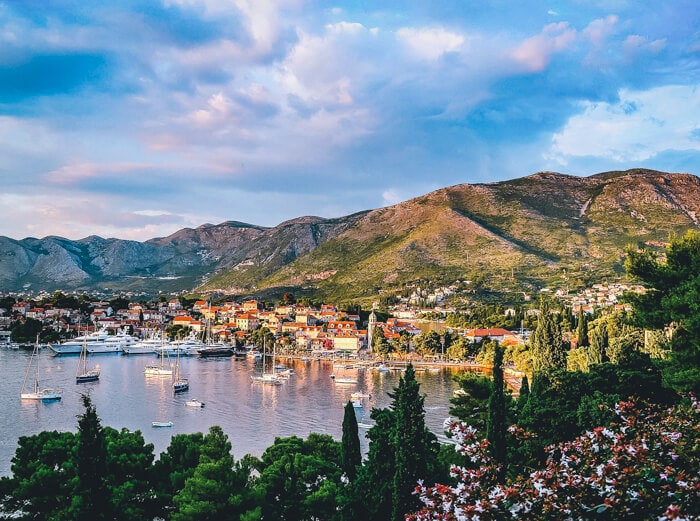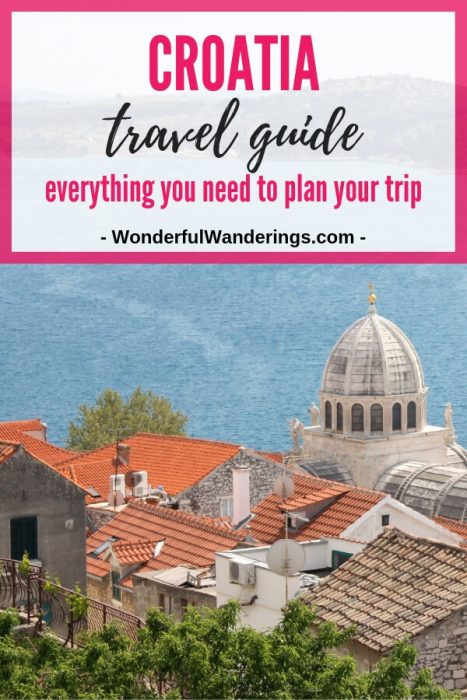Planning a trip to Croatia? Awesome! This Croatia Vacation Guide will help you do just that.
Croatia is located in central and southeast Europe, on the Adriatic Sea. Bordering Slovenia to the northwest, Hungary to the northeast, Serbia to the east and Bosnia, Herzegovina and Montenegro to the southeast. Officially the Republic of Croatia, the Mediterranean country has over 2,000 km of coastline with over 1,000 islands. It’s a member of the European Union (EU), United Nations (UN), Council of Europe, NATO and the World Trade Organization (WTO).
Explore charming coastal towns, beautiful nature, and UNESCO World Heritage Sites during your Croatia vacation. There’s plenty for the adventurous types as well from diving and kayaking to rock climbing and horse riding. Its remarkably clear waters and long sandy beaches make it a great holiday destination.
Contents
- Croatia vacation guide: quick facts
- Counties of Croatia
- 1. Dubrovnik-Neretva
- 2. Bjelovar-Bilogora
- 3. Brod-Posavina
- 4. City of Zagreb
- 5. Koprivnica-Križevci
- 6. Istria
- 7. Karlovac
- 8. Krapina-Zagorje
- 9. Lika-Senj
- 10. Medimurje
- 11. Osijek-Baranja
- 12. Pozega-Slavonia
- 13. Kvarner
- 14. Sisak-Moslovina
- 15. Split-Dalmatia
- 16. Sibenik-Knin
- 17. Varazdin
- 18. Virovitica-Podravina
- 19. Zadar
- 20. Vukovar-Srijem
- 21. Zagreb County
- How to travel to Croatia
- How to travel around Croatia
- What to pack for Croatia
- The best time to visit Croatia
- What to eat in Croatia
- Famous events in Croatia
- Public holidays in Croatia
- Cultural customs to be aware of in Croatia
- Where to stay in Croatia
- Don’t forget travel insurance
- Basic phrases and their pronunciation
- Is Croatia safe to travel to?
- The use of cash and cards in Croatia
- Calling abroad, WiFi and data use in Croatia
- Tipping in Croatia
- A brief history of Croatia
- Posts about Croatia
Croatia vacation guide: quick facts
Size: 56,594 km² or 21,851 sq mi
People living there: more than 4,280,000
Capital of Croatia: Zagreb
Governmental structure: a parliamentary, representative democratic republic framework where the Prime Minister is the head of government
National day: October 8
Time zone: Central European Time (CET) / UTC+1 / GMT+1
Currency: Croatian Kuna
Power voltage and socket type(s): 230V, plug types F and C. If your devices don’t work with these plug types, make sure to bring a universal adapter.
Official religion(s)/Freedom of religion: Freedom of religion. 87% of the population is Roman Catholic, followed Eastern Orthodox Christians, non-believing citizens, and Muslims.
Official language(s) and general knowledge of English: Croatian is the official language. Basic English is spoken in the coastal and tourist areas.
Drives on this side: right
International driver’s licence accepted? yes
Phone code: +385
Vaccinations needed? no
Is it safe to drink the tap water? yes
Looking for more diverse facts about Croatia? Check this post with interesting facts about Croatia.
Counties of Croatia
Croatia is divided into 20 counties and Zagreb, the capital city has the authority and status of both a city and a county. Each county has a county assembly, a representative and deliberative body. Each county also has its own character and I hope this the short summary of each of them below will help you choose where to go in Croatia.
1. Dubrovnik-Neretva
Located on the southern tip of Croatia, the county stretches from Ploce in the north to the Montenegro border in the south. The whole Dubrovnik region is known for its beautiful landscapes and emerald green waters. Dubrovnik was the main filming location for King’s Landing in Game of Thrones and is a popular holiday destination. Sip fine wine and eat fresh food with a view of the sea.
2. Bjelovar-Bilogora
Situated in central Croatia, the region’s gentle landscapes and friendly locals make for a relaxing destination. The capital of the area is Bejelovar and is a great base for exploring the nearby areas. The mountain range, Bilogora, is close by and covered with forests and vineyards. Spend your time walking or relax in the Daruvar Spa.
3. Brod-Posavina
The Brod-Posavina county is on the Sava River, in the southeastern part of Croatia. During the Balkan War in the 1990s, the region suffered much damage. The county capital city is Slavonski. Be sure to visit the Brod Fortress, the church of the Holy Trinity and the Franciscan Monastery.
4. City of Zagreb
Croatia’s capital, Zagreb, is an exciting and dynamic city. With a number of museums, restaurants and music venues to keep you entertained. The city is filled with parks and even forests, perfect for cycling and walking. Take a stroll through upper town, the oldest part of the town, or hike to the Sljeme mountain. There are still remains of town walls and towers from medieval times.
5. Koprivnica-Križevci
In northern Croatia, the county is home to the town of Krizevci, the oldest town in the region. Once an important stronghold against the Ottoman Empire, you’ll also find several churches to visit as well as an Augustine monastery. One of the main cities in the county, Koprivinica, is well connected to Hungary via a direct train.
6. Istria
This region has something for everyone from beach lovers and history buffs to rock climbers and foodies. The coastline is dotted with beaches and includes charming towns such as Pula and Porec. Experience an easy-going lifestyle with delicious restaurants and be sure to check out the 2000-year-old Roman amphitheater in Pula. It’s one of the six largest Roman amphitheaters in the world.
7. Karlovac
Situated less than an hour south of Zagreb, you’ll find small villages throughout the region. The town of Ogulin is home to a fortified castle used in the 16th century. If you prefer something a little adventurous, take park in rock climbing, mountain biking, and spelunking. The mountain of Bjelosacia also becomes a ski resort in the winter so is a great spot to head to all year round.
8. Krapina-Zagorje
To the northwest of Zagreb, the region features some of Croatia’s most gorgeous scenery. Head for the rolling green landscape to explore thermal spas and medieval castles. The medieval fortress of Medvedgrad can be found on the slopes of Medvednica mountain and is now a shrine to those who fell in the ‘Homeland War’. One of the region’s top attractions is Krapinske Toplice, a thermal spa that features four outdoor thermal pools.
9. Lika-Senj
Located in between Velebit Mountain and the mountain massif of Kepela and Pljesevica. The surrounding area is a popular site for trout fishing with Otocac being the best base for fishing in the local waters. The UNESCO World Heritage Site, Plitvice Lakes National Park is one of the places to go in Croatia and definitely worth a visit.
10. Medimurje
Tucked away between Slovenia and Hungary, the region remains heavily influenced by its Hungarian neighbor which is particularly noticeable in its cuisine. The majority of the county is known for its wine. Head to Sveti Martin Thermal Springs in the Sveti Martin Na Muri district for some rest and relaxation.
11. Osijek-Baranja
Perfect for nature lovers, the county is home to the Kopacki Fit Nature Park, one of Europe’s largest remaining wetlands. You can also take a day trip out to Dakovo from Osijek to visit the brick cathedral and the Lipizzaner training staples. If you’re looking to soak up the waters, then visit the Bizovacke-Toplice Spa. City folk head to Osijek, the fourth largest city in Croatia.
12. Pozega-Slavonia
The county capital, Pozega, is a calm market town featuring baroque architecture. The region is known for its mountainous landscape, hills, and vineyards. Lipik, a thermal spa, dates back to the Roman era and is a popular attraction. You won’t want to miss Nature Park Papuk to wander through its beech and fir forests.
13. Kvarner
The combination of sea, island, and highlands make the landscape varied and interesting. Sail on a yacht during the summer and ski down the slopes in winter. There’s plenty of activities to keep you busy here with a number of wellness treatments to help you relax after a long day.
14. Sisak-Moslovina
Located in south-central Croatia, almost half of the land is cultivated mainly with vineyards and orchards. If you’re looking to explore the Lonjsko Pole Nature Park, east of the Sava river then the town of Sisak is a great base. The park is a great location for bird watching and is also home to the Posavlje horse. The famous Topusko spa is another reason to visit the county and has attracted visitors since the ancient Roman times.
15. Split-Dalmatia
One of the most popular regions in Croatia, it’s very well visited every year. You’ll find some of Croatia’s most beautiful islands including Brac, Vis and Hvar. Brela and Baska beaches are some of the most well-known beaches. The Cetina river runs through the center and is one of the county’s best rafting spots. Be sure to visit the Roman ruins of Solin, the walled city of Trogir and the fortress of Klis.
Discover more of Split-Dalmatia:
16. Sibenik-Knin
The scenic region with a rugged coastline has over 200 islands and islets, including the Kornati Islands National Park. Top things to do in the area including a visit to the Cathedral of St James. Stay in the town of Sibenik to visit the Sibenik archipelago and Krka National Park.
17. Varazdin
A densely populated region situated in northwest Croatia. The county has excellent links to Hungary and Zagreb making it an easily accessible destination. The baroque music festival of Varazdin is one of Croatia’s most prestigious festivals, held every year in September. The Varazdinske Toplice Spa, nestled in the wooded hills, has been visited since the 1st century and is a highlight in the region.
18. Virovitica-Podravina
While not a touristy area, the region is home to the Pejacevic castle built in the early 19th century. The church of St Roch is also worth a visit. The church was built in the 18th century and is a fine example of baroque architecture.
19. Zadar
Zadar County is a great destination for nature lovers. Explore Velebit mountain, Kornati Islands and Paklenica nation park. The largest town, Zadar, contains Roman ruins, medieval churches, and museums in its historical center. Whether you want to go hiking or find a vibrant nightlife, the Zadar region has a lot to offer. Make sure to visit the Creovac cave system with 4km of channels, halls, and corridors.
20. Vukovar-Srijem
Located on the easternmost tip of Croatia, the county is not heavily developed for tourism. Sites to visit include the archaeological site of Vucedol and the towns of Ilok and Vinkoci. The best time to visit is during local festivals such as the Wine Harvest or the Actor’s Festival.
21. Zagreb County
The Zagreb County forms a ring around Zagreb however does not include the capital city within it. To the east of Zagreb is Dugo Selo, a popular excursion destination. The nearby village of Bozjakovina contains the Draskovic castle and green gardens. The man-made Zajarki Lake is a popular swimming hole and a great place to cool off on a hot day.
How to travel to Croatia
Entry requirements
You need a passport valid for at least three months to travel to Croatia. A visa is not required for EU or US nationals. You can stay in Croatia for up to 90 days visa-free. Apart from EU nationals, visitors to Croatia do need to show proof of return or onward travel.
Getting to Croatia
By plane
There are daily international flights to Croatia. Franjo Tudman Airport in Zagreb is Croatia’s largest and busiest international airport. To reach Split and the surrounding area, Split airport also known as Resnik airport, is the second busiest airport in Croatia. For visitors heading to Dubrovnik, one of the country’s major summer destinations, Dubrovnik airport sees over 1.4 million people every year.
Look here for flight options and prices to Croatia.
By bus
Croatia is well-served by international bus companies. Traveling by bus is probably one of the cheapest ways to reach the country although not the quickest. You can reach Croatia by bus from Austria, Bosnia, Slovenia, Germany, Hungary, and Serbia. Long distance bus companies going to Croatia include AP Varazdin, Autotransports Sibenik, Autoherc, and Croatia Bus, as well as the internationally-known Flixbus.
Look here for bus routes and prices to Croatia.
By train
You can reach Croatia directly by train from several of its neighboring countries. The main destinations you can reach by rail in the country are Zagreb, Split, Pula, and Rijeka. Despite being close by, traveling from northeast Italy to Croatia isn’t the best option. You can reach Croatia directly by train from Slovenia, Serbia, Hungary, Austria, Germany, and Switzerland.
Look here for train routes and prices from within Europe.
By ferry
Traveling by ferry to Croatia is only accessible if you’re coming from Italy. The only international ferry services are from there, with no other services from any other European country. Companies to travel with include Veneza Lines, Adriatic Lines, Trieste Lines, and Gomo Viaggi.
Check here for ferry routes and prices to Croatia.
How to travel around Croatia
How to travel in Croatia independently
There are a number of ways to travel around Croatia which are relatively easy and inexpensive. Depending on your needs you can travel by air, bus, train, ferry or even hire a car. One of the best ways to travel around Croatia is by bus. The extensive bus network has numerous buses operating throughout cities as well as more rural, local routes.
Train travel is also a great option and a fairly inexpensive way to see Croatia. However, the train network isn’t as far-reaching as the bus network. For example, Dubrovnik doesn’t have a train station.
If you’re traveling to one of Croatia’s many islands then you’ll be using the ferries of course. If you’re short on time, traveling by plane domestically could be an option, but not the cheapest one.
For those of you that prefer the freedom and flexibility of driving, the majority of the roads including the motorway system are of a good standard. One of the most picturesque roads in Croatia has to be the Adriatic road, connecting Rijeka to Dubrovnik. Be warned that locals use their horns a lot and you need to be a pretty confident driver to take on the roads in Croatia. Locals love to overtake, even on tight corners.
if you don’t want to drive all the way to Croatia in your own car, or don’t own a car, consider flying there and then rent a car to explore the country.
What to pack for Croatia
Croatia has four seasons summer, spring, fall, and winter. The country has two climates, one along the coast and the other for the inland. During the summer, the coast has a typical Mediterranean climate with hot, dry and sunny weather.
Winters are relatively mild but sometimes wet. Average summer temperatures reach the high 20s°C but you’ll likely experience temperatures well into the 30s°C. It’s not unusual for the summer weather to extend into fall, with beachgoers still swimming well into the later months.
Away from the coast, Croatia’s winters can get pretty cold with temperatures often falling below 0°C. Snow is likely and can get heavy. On the other hand, summers can reach the high 30s°C with no cooling sea breeze to take the edge off.
What to pack for Croatia in summer
- light clothing
- sunglasses
- sunscreen
- good walking sandals
- mosquito repellent spray
- a reusable water bottle
- a light sweater
What to pack for Croatia in winter
- gloves
- a warm, water and windproof coat
- a warm scarf
- a hat
- merino woolen socks
- a merino woolen baselayer
- comfortable and waterproof shoes
- a reusable water bottle
What to pack for Croatia in fall and spring
If you’re traveling to Croatia in these “in between seasons”, it’s important to pack layers and check the weather report beforehand. early fall can still feel like summer while late fall can be rather chilly. The same goes the other way around for spring. You won’t need a big winter coat but do bring a light but warm jacket that you can easily stow away.
The best time to visit Croatia
In terms of weather, the best time to go to Croatia is either September or May. September has beautiful sunny days and the sea is still warm enough to take a dip. May is a great time to visit Croatia too, with temperatures being pleasant without any of the sweltering heat.
The peak holiday season is July and August and is only the best time to travel to Croatia if you don’t mind busy beaches and are limited because of school holidays, for example. Mind you, peak season temperatures can be roasting.
Despite the crowds, you won’t want to miss the chance to see the lavender boom on Hvar Island or attend the Ultra Europe Music Festival. Accommodation will book up early so if you prefer to take your time and be more relaxed, then head to Croatia out of peak season.
What to eat in Croatia
- Black risotto, made with squid or cuttlefish, garlic, red wine, olive oil, and squid ink
- Buzara, mussels in a wine broth with breadcrumbs
- Fuži and pljukanci, quill-shaped homemade pasta typically served with cream or red sauces
- Peka, meat and vegetable dish cooked under a terracotta or iron lid over burning embers
- Brudet, slow-cooked fish casserole with onion, tomato, wine, and herbs, served with polenta
- Shrimps na buzaru, fresh whole shrimps pan-fried with garlic and olive oil
- Octopus salad, chunks of boiled octopus, onion, olive oil, parsley, and vinegar
- Pršut, dry-cured and salted pork leg seasoned with local herbs
- Kotlovina, chopped chicken or pork fried with vegetables, paprika, and garlic
- Krpice sa zeljem, flat pasta cut into squares and served with stewed or roasted cabbage
Famous events in Croatia
If you truly want to explore Croatia, you need to explore its cuisine as well. The below is a selection of dishes to try on your Croatia trip.
- Rijeka Carnival, Rijeka (Jan-March) – the largest carnival in Croatia includes pageants, concerts, masked balls, and a parade
- Fuliranje, Zagreb (December) – an award-winning Christmas market in the capital. Throughout December you’ll find street food, mulled wine, live music, and craft stores
- Ultra Europe, Split (July) – one of the world’s biggest electronic music festivals takes place at Plojud stadium for three days
- INmusic Festival, Zagreb (June) – set over three days in Zagreb, the music festival has seen the likes of St Vincent, Nick Cave, and PJ Harvey take the main stage
- Labin Art Republika, Labin (July-August) – the town of Labin comes alive with street theatre, concerts, open studios, clown performances and plays
- Following the Cross, Jelsa – the 500-year-old procession starts from Jelsa and five surrounding towns on the night of the
- Holy Thursday, following a cross bearer throughout the night in a 25 km circuit
- Dubrovnik Summer Festival, Dubrovnik (July-August) – one of the most popular festivals in Croatia, there’s a programme of opera, dance, concerts, and theatre throughout the city
- Sali Fiesta, Sali (August) – visitors from across the region celebrate with donkey races and a candlelit procession the weekend before Assumption
- Pula Film Festival, Pula (July) – for over six decades the festival hosts screening of mainly Croatian films with some international viewings
- Outlook Festival, Pula (September) – experience Europe’s biggest drum and bass festival for five days in Punta Christo Fort
Public holidays in Croatia
It’s always a good idea to check when the public holidays are when you’re planning a trip to Croatia so that you’re not surprised by closed shops or celebrations.
- New Year’s Day
- Three Kings Day (January 6)
- Easter Monday
- International Worker’s Day (May 1)
- Corpus Christi
- Anti-Fascist Struggle Day (June 22)
- Statehood Day (June 25)
- Victory and Homeland Thanksgiving (August 5)
- Assumption of Mary (August 15)
- Independence Day (October 8)
- All Saints’ Day (November 1)
- Christmas Day
- St. Stephen’s Day (December 26)
Cultural customs to be aware of in Croatia
Croatians don’t exchange the normal pleasantries you might be used to experiencing. Often, people from the Balkans can sound more aggressive when they speak but they aren’t yelling at you. The majority of the locals are warm and welcoming.
Where to stay in Croatia
I always use Booking.com to book hotels, guesthouses, and B&Bs abroad. The platform has lots of filtering options I can use to find hotels that fit my needs. If you want to book your Croatia accommodation, I highly recommend you check there.
When I want to stay at an apartment rather than a hotel, I use Airbnb.
Don’t forget travel insurance
No matter how well you plan and research a trip, there are always things that happen beyond your control. Something might get canceled, you can get ill or hurt while traveling or one of your electronics might break or get stolen. When misfortune strikes, travel insurance has got you covered. I’ve had ongoing travel insurance ever since I started traveling to make sure I’m covered for every trip I go on. Don’t have insurance yet? You can get a free quote here:
Basic phrases and their pronunciation
How are you?
Good morning
Thank you
Excuse me
Please
I’m sorry
Yes
No
Nice to meet you
What is your name?
How much does it cost?
Do you speak…?
I don’t speak…
Could you speak a little slower?
/
I don’t understand
Can I pay by credit card?
/
Could you call me a taxi?
/
How do I get to…?
Could I see the menu, please?
Kako ste? (kah-koh steh)
Dobro juror (daw-braw yoo-traw)
Hvala (flah-lah)
Oprostite (oh-proh-stee-teh)
Molim (moh-leem)
Zao mi je (zha-oh mee yah)
Da (dah)
Ne (neh)
Drago mi je (drah-goh mee yeh)
Kako se zoves? (kah-koh seh zoh-vehsh?)
Koliko? (koh-lee-koh too kost-teh)
Govorite li…? (goh-voh-ree-teh lee…?)
Ne govorim… (neh goh-voh-reem)
Mozete li molim vas govoriti malo sporije? (moh-zheh-teh lee moh-leem vas goh-voh-ree-tee mah-loh spoh-ree-yeah?)
Ne razumijem (neh rah-zoo-mee-yehm)
Mogu li platiti kreditnom karticom? (moh-goo lee plah-tee-tee kreh-deet-nohm kahr-tee-tsohm)
Mozete li mi pozvati taxi? (moh-zheh-tel lee mee poh-zvah-tee tah-xee?)
Kako doci do…? (kah-koh doh-chee doh…?)
Mogu li vidjeti meni, molim? (moh-goo lee vee-dyeh-tee meh-nee, moh-leem?)
Is Croatia safe to travel to?
So is it safe to travel to Croatia? Generally, Croatia is a safe destination with a low crime rate. Still, there are a few things to watch out for such as pickpocketing and petty theft in high tourist areas such as Zagreb. Make sure to take the normal precautions such as keeping your wallet and phone in your front pocket and keeping your bags close to you in crowded areas.
The use of cash and cards in Croatia
Debit and credit cards are widely accepted. Visa and MasterCard are recognized with American Express being accepted in fewer places. Although ATM’s are widely available throughout Croatia, using a combination of cash and card is advised. Smaller restaurants and shops may prefer to take cash over card. ATM’s can be found throughout the country but be aware of ATM and bank fees when you’re withdrawing money.
Calling abroad, WiFi and data use in Croatia
Those with a SIM card from an EU country don’t have to pay roaming charges when calling, texting, or using data in Croatia. The same goes for some global phone plans.
If you don’t have a EU SIM but still want to have unlimited WiFi, check out Solis Wifi.
Skyroam offers both day passes and monthly subscriptions providing you with 4G throughout your trips. I’ve been using their daily passes not just when I travel outside the EU (no roaming charges for me in the EU) but also as a backup for when I think I’ll go over my phone’s data plan.
Check out Solis Wifi here.
Tipping in Croatia
Tipping is appreciated but not obligatory in Croatia. If you’re happy with the service and you’d like to leave a tip, read this section on tipping in Croatia for information on who to tip what when and where.
A brief history of Croatia
The first Greek colonies were founded on the Adriatic islands in 400BC. In 295, the Roman Emperor, Diocletian, began to construct the fortified palace near the village where he was born. This later became the historic downtown of Split. Croats then went onto settle in the area between the Adriatic Sea and the rivers Drava and Sava.
The Croatian kingdom was established in 925 and King Tomislav became the first crowned king of Croatia. Following the death of Peter Svacic, the last Croatian king, the country entered into a union with Hungary. Croatian became the official language of Croatia and Nikola Tesla, the inventor, was born in 1856.
After the fall of the Austro-Hungarian Monarchy in World War I, the country became part of the Kingdom of Serbs, Croats, and Slovenes, later called Yugoslavia. In 1941, German and Italian forces occupied Yugoslavia. After World War II, the monarchy became a communist republic under prime minister Tito. Tito died in 1980 leading to ethnic and nationalist tensions. In 1991, Croatia declared its independence. By the end of the year, nearly a third of the country was under Serb control.
In 1995, Croat forces retook the regions and continued to restore diplomatic relations with Yugoslavia. The wartime Croatian Serb leader Milan Basic was jailed for 13 years for his part in war crimes in the early 90s. Croatia joined the EU in 2013. The country has undergone many transitions over the years, not at least coping with the effects of the war.
And that’s it for this Croatia vacation guide! If you want to read more about Croatia, check out these five books that give insight into the country’s culture and history.
Posts about Croatia
Click here for all the posts I’ve written about Croatia.
PIN FOR LATER

